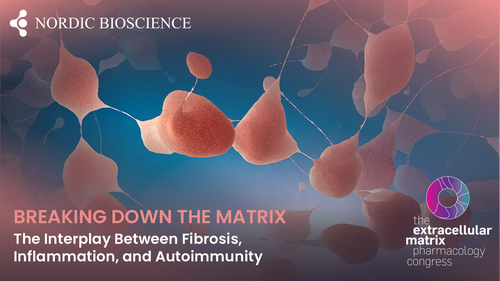Breaking Down the Matrix: The Interplay Between Fibrosis, Inflammation, and Autoimmunity
Autoimmune skin diseases involve more than immune dysfunction—they disrupt tissue structure through early and persistent extracellular matrix (ECM) remodeling. This webinar examines the ECM’s central role in the pathogenesis of autoimmune conditions affecting both skin and joints, with a focus on systemic sclerosis and lupus.
Systemic sclerosis is characterized by immune dysregulation, vascular abnormalities, and progressive fibrosis, driven by activated fibroblasts and sustained pro-fibrotic signaling that lead to excessive ECM deposition and multi-organ involvement. In lupus, widespread inflammation and immune-mediated tissue damage also intersect with ECM remodeling, contributing to disease heterogeneity and long-term complications.
By exploring shared inflammatory and fibrotic pathways across these diseases, we highlight recent advances in targeted therapies designed to interrupt ECM-driven pathology and improve disease management.
Read more
Systemic sclerosis is characterized by immune dysregulation, vascular abnormalities, and progressive fibrosis, driven by activated fibroblasts and sustained pro-fibrotic signaling that lead to excessive ECM deposition and multi-organ involvement. In lupus, widespread inflammation and immune-mediated tissue damage also intersect with ECM remodeling, contributing to disease heterogeneity and long-term complications.
By exploring shared inflammatory and fibrotic pathways across these diseases, we highlight recent advances in targeted therapies designed to interrupt ECM-driven pathology and improve disease management.
Read more
